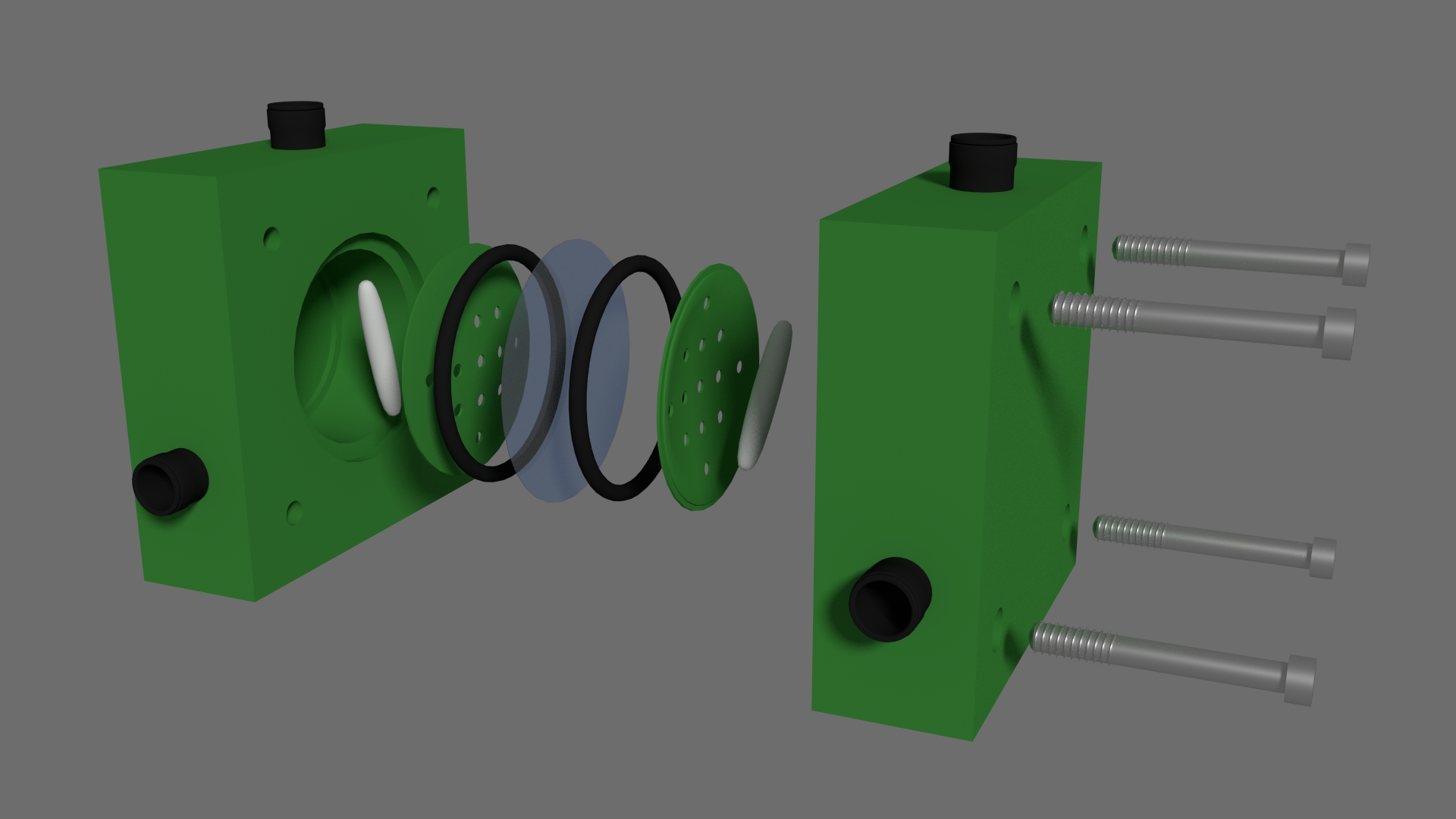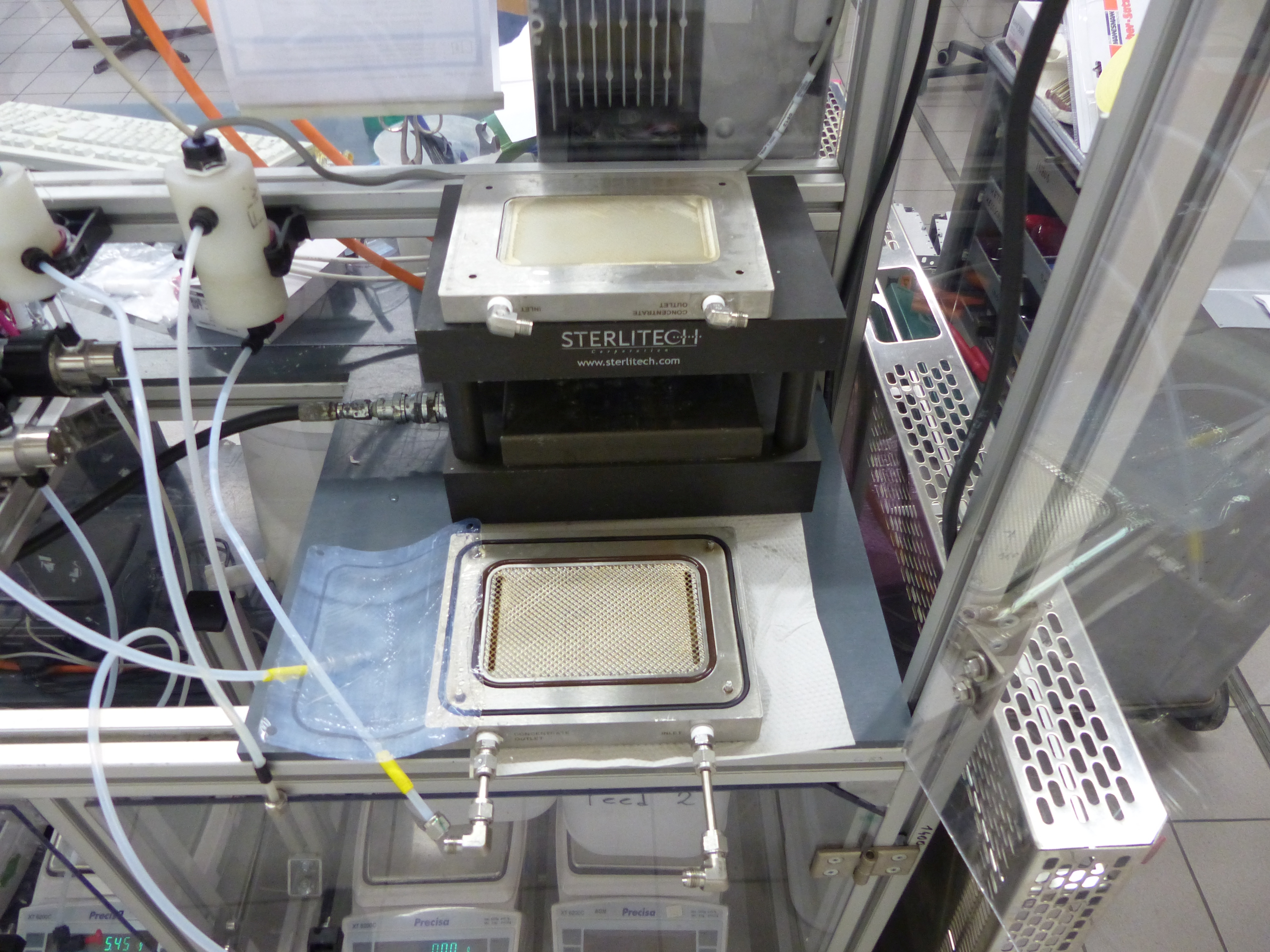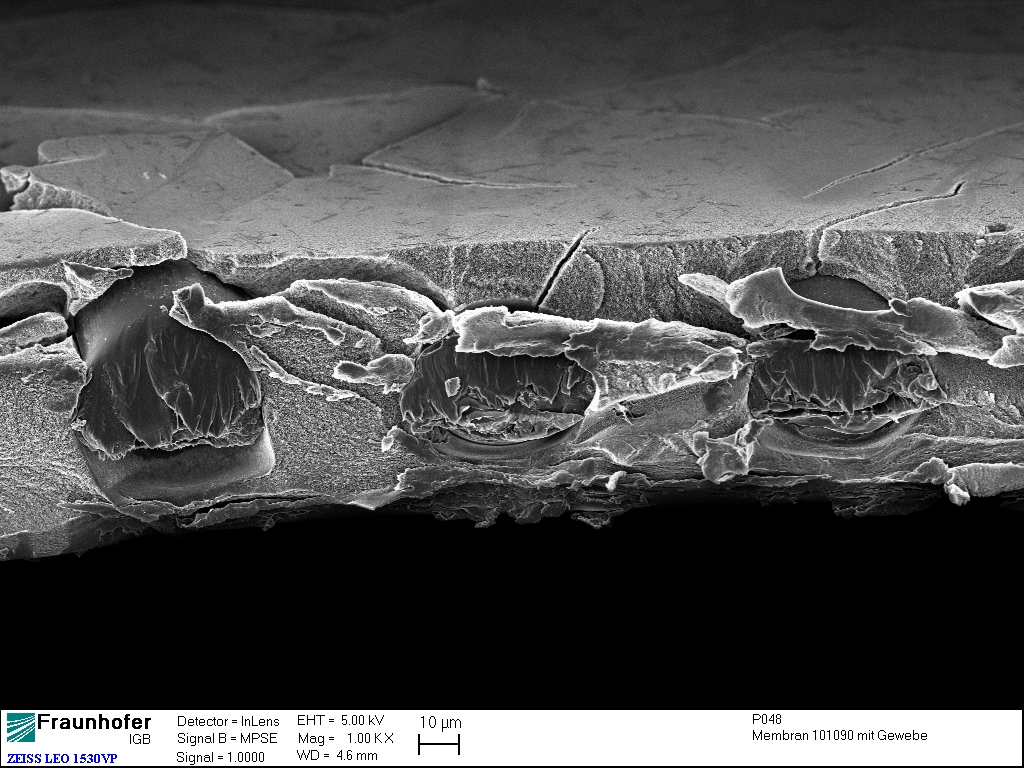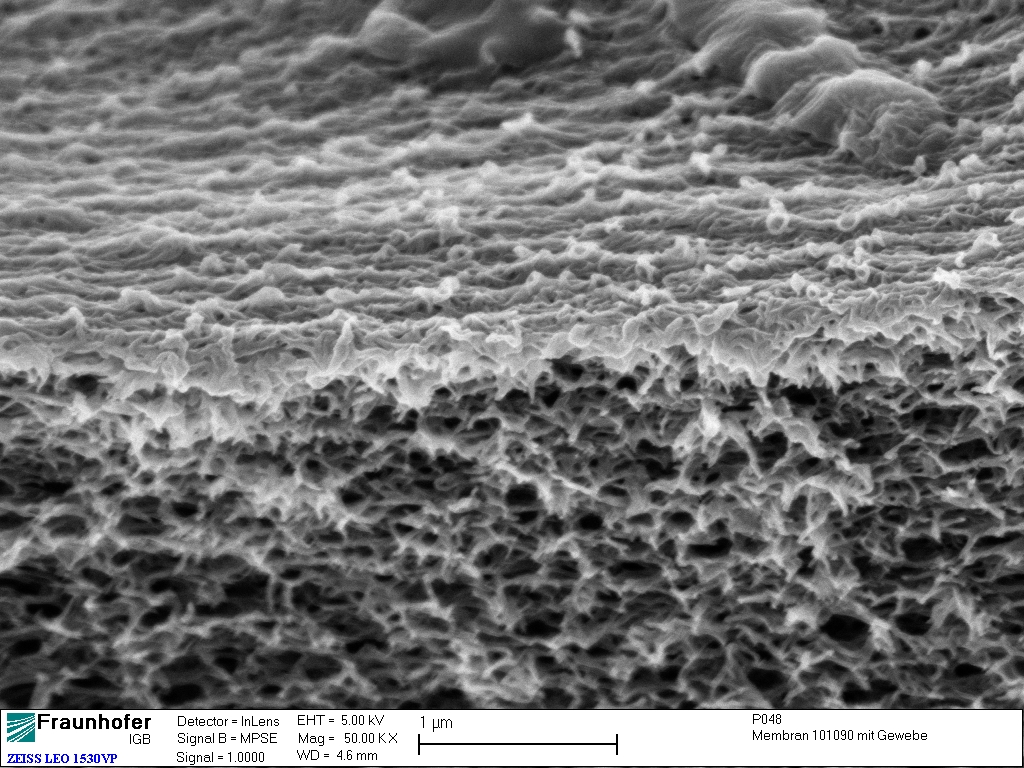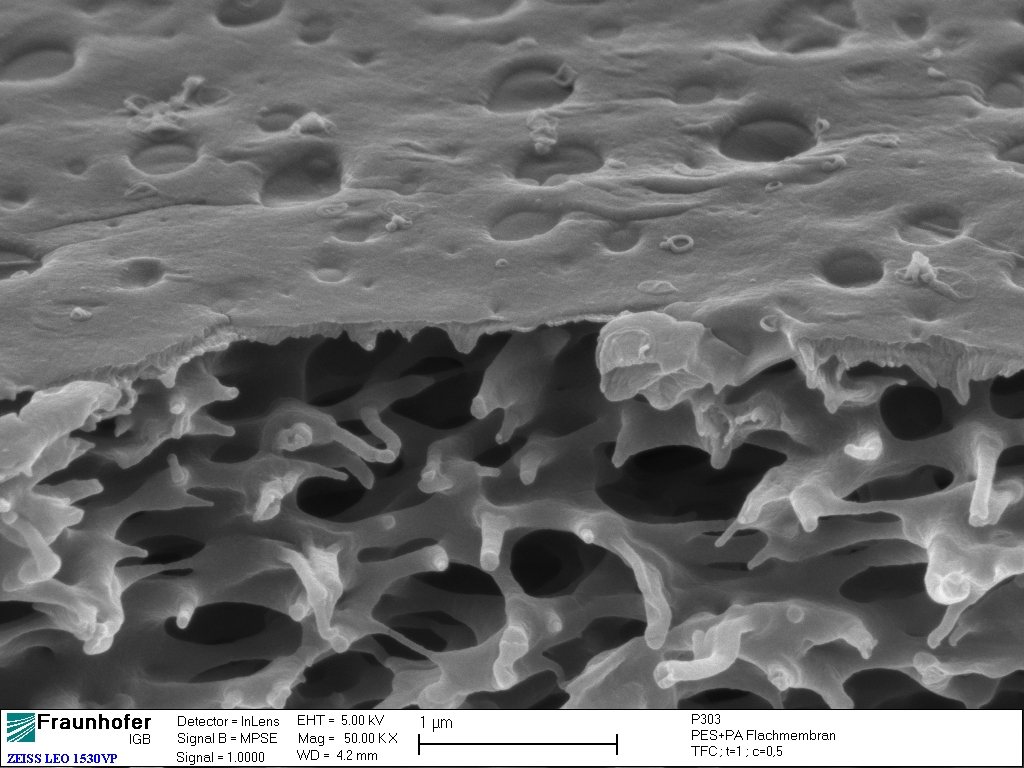For fermentatively produced second-generation fuels such as butanol, downstream processing is an energy-intensive and thus cost-intensive step. Through the combined use of optimized gas stripping and an osmosis-driven membrane process, a process has been developed that allows dewatering of the product stream with significantly reduced energy input. For this purpose, customized TFC flat membranes for forward osmosis were developed at the IGB.
BIOBUTANOL – Use of membranes for the processing of biobutanol by osmosis
Need: energy-optimized processing
In the long term, it will be inevitable to replace fossil fuels with renewable energy sources. The breakthrough of biofuels depends not only on economic factors but also on CO2 and energy balances. These still need to be significantly improved for fermentatively produced second-generation fuels such as butanol to be competitive and environmentally sustainable [1]. In this context, downstream processing is an energy-intensive and thus cost-intensive step.
Through the combined use of optimized gas stripping and an osmosis-driven membrane process, a process should be developed that allows dewatering of the product stream with significantly reduced energy consumption. The use of forward osmosis has already been described for the upgrading of ethanol [2]. In contrast, no work was known for butanol, in which case only concentration to 7.3 wt% would be necessary, as phase separation would then occur.
New forward osmosis membranes
In the joint project "Innovative process combination for downstream processing of biobutanol", the task of Fraunhofer IGB was to develop suitable membranes and a membrane process for the concentration of biobutanol. For this purpose, various commercial reverse osmosis membranes and proprietary membranes for forward osmosis (FO), both cellulose acetate-based (CA) and thin-film composite (TFC) membranes, have been tested [3 – 5]. The membranes were evaluated for their water permeation and butanol and salt retention. Here, the feed solution was an aqueous butanol solution containing 5.7 % by weight. An aqueous NaCl solution with a concentration of 300 g/L NaCl was used as the target solution.
Best separation performance
The CA membrane was casted into a fabric, is 60 µm thick, and has a distinct asymmetric structure with a very thin separation layer (about 100 nm). The support of the TFC membrane is a 110 µm thick microfiltration membrane with a pore size of 100 nm [3 – 5].
For CA membranes, the separation efficiency can be controlled by the temperature of the heat bath. The higher the temperature, the smaller the water flux and the higher the butanol retention. At 90 °C, the CA membranes show the same butanol retention as commercial reverse osmosis membranes, with water flux 75 percent larger at 1.23 L/(h m2).
With the TFC membranes, separation performance can be controlled by the reaction time of the interfacial polymerization. Thus, with 480 seconds of reaction time, membranes with a water flux of 4.35 L/(h m2) and a butanol retention of 97 percent are obtained. Another parameter used to compare the membranes was the ratio of water to butanol flux. This was in the range of 20 for the commercial membranes, 40 for the best CA membranes, and 60 for the best TFC membranes.
The membranes were then aged in an ABE solution (26 g/L acetone, 80 g/L butanol, 22 g/L ethanol) for 500 hours. In principle, the membranes were stable in this solution. However, the water flux continuously increased by 30 percent over time, and the butanol passage increased by a maximum of 55 percent.
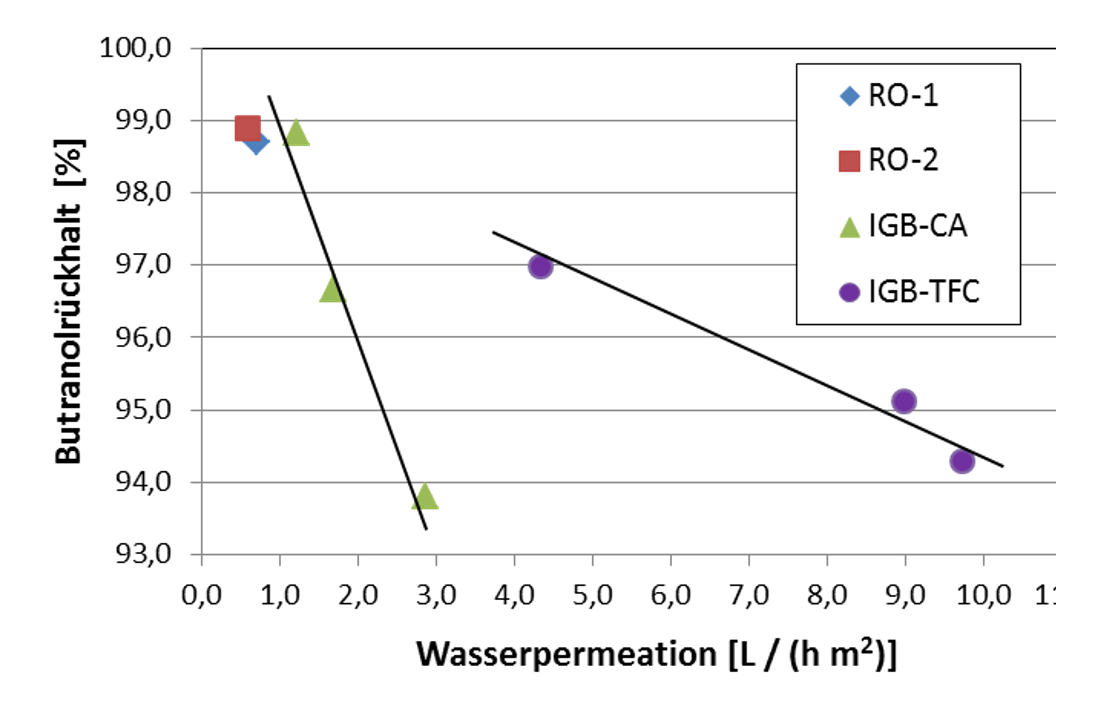
Excellent water flux, rapid phase separation
The process parameters were then optimized. Depending on the flow rate, fluxes of 12 L/(h m2) were determined for TFC membranes, for example, with a water/butanol ratio of 30. The best commercial reverse osmosis membranes showed a water flux of 1.8 L/(h m2) with a water/butanol ratio of 22.
Using these results, the time to occurrence of phase separation was estimated in each case. For the best commercial membrane, a time of 42 h was obtained, while for the best TFC membrane, a time of four hours was calculated. Experimentally, no phase separation was observed over a period of up to five days with the commercial membranes. With the best TFC membranes, on the other hand, clear phase separation was already evident after six hours.
Outlook
In summary, it can be stated that it is technically possible by means of forward osmosis to concentrate butanol solutions to such an extent that phase separation occurs, whereby butanol can be utilized as a raw material.
Literature
[1] Qureshi, N.; Blaschek, H. (2000) Recovery of butanol from fermentation broth by gas stripping, Renewable Energy 22: 557 – 564
[2] Zhang, X.; Ziyao, Z.; Wang, D.; Diniz da Costa, J. (2013) A novel ethanol dehydration process by forward osmosis, Chemical Engineering Journal 232: 397–404
[3] Kunst, B. and Sourirajan, S. (1970). Development and performance of some porous cellulose acetate membranes for reverse osmosis desalination. Journal of Applied Polymer Science 14(10): 2559-2568
[4] Touati, K.; Hänel, C.; Tadeo, F.; Schiestel, T. (2015) Effect of the feed and draw solution temperatures on PRO performance: Theoretical and experimental study, Desalination 365: 182-195
[5] Jin, H.; Huang, Y.; Li, H.; Yu, P.; Luo, Y. (2015) Fabrication of BaSO4 -based mineralized thin-film composite polysulfone/polyamide membranes for enhanced performance in a forward osmosis process, RSC Adv. 5: 79774–79782
Project information
Project title
BIOBUTANOL – Use of membranes for the processing of biobutanol by osmosis
Project duration
March 2015 – August 2017
Project partners
- Institut für Umweltverfahrenstechnik, University of Bremen
Funding
We would like to thank the German Federal Ministry of Food and Agriculture (BMEL) for funding the project »BIOBUTANOL«, grant number 22032014.
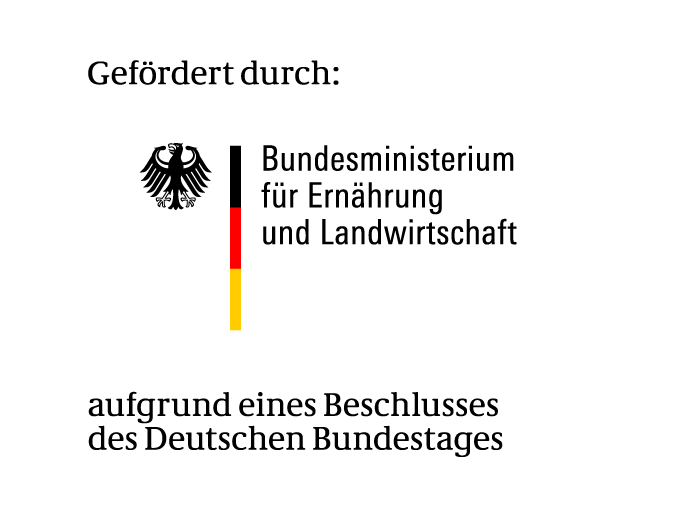
 Fraunhofer Institute for Interfacial Engineering and Biotechnology IGB
Fraunhofer Institute for Interfacial Engineering and Biotechnology IGB
